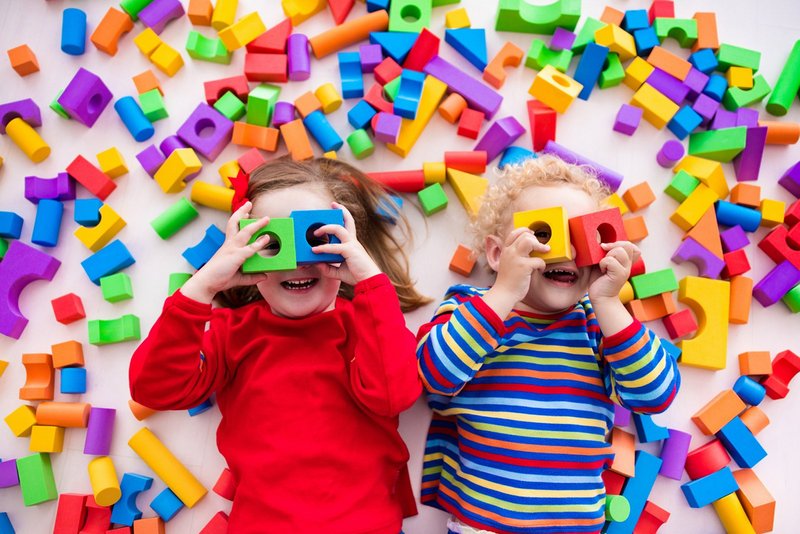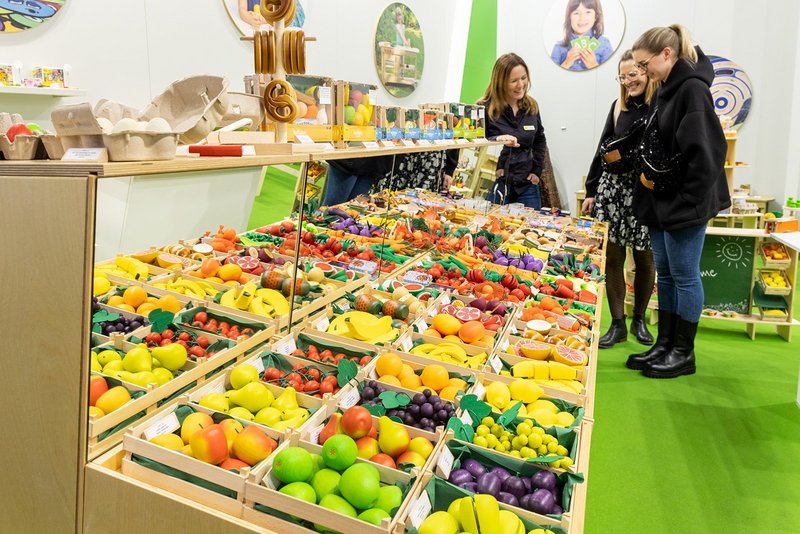
International Game Inventors Convention held in Nuremberg for the first time ever
Peter Neugebauer’s impressions
From Peter Neugebauer
Nothing is more lucrative for the games industry than uniting inventors and editors. This is what happened on a grand scale with the International Game Inventors Convention, which, for the first time ever, was held in parallel to the Spielwarenmesse in Nuremberg this year.
Conventions of inventors of games have a long tradition in Germany. In the 1980s, games designer Reinhold Wittig founded what is now known as the Game Inventors Convention in his hometown of Göttingen. Journalist Tom Werneck established a southern German counterpart in Haar near Munich that has existed for over 25 years. This convention has now moved to the Spielwarenmesse and was held in Nuremberg for the first time ever in 2023. On the Friday of the trade fair, inventors and editors spent a day meeting up, exchanging ideas and presenting prototypes of new game ideas. For the benefit of all.
Presentation with vision
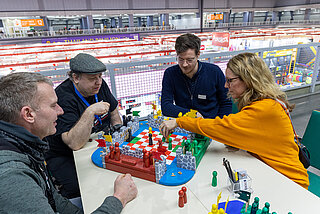
Anyone entering Hall 11.1 of the Nuremberg Exhibition Centre was greeted by a spacious gallery with almost 150 tables. That is where the game inventors presented their prototypes. Whenever a game editor or a game agency approached a table, a manifold colourful world of board and card games opened up to them. All the game designers had brought one or more prototypes along with them. They invited people to try them out and explained their ideas. Once immersed in the world of dice, cards and figures, visitors got caught up in the flow of new ideas and trend-setting prototypes.
Colourful diversity at the game tables
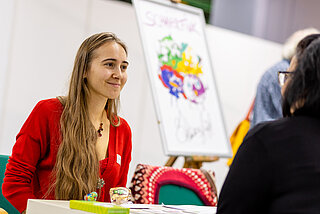
I got stuck on a poster that attracted attention with splashes of colour and the word Schmierfink (German for a person with bad handwriting). No sooner had I found a free seat than Sarai Aporta explained her idea for the game, which she had developed with her father. Thematically, Schmierfink tries something completely new. The aim is to decipher scribbled compound words. And, as the icing on the cake, everyone gets to scrawl a compound word themselves in the Schmierfink manner. Other players shouldn’t be able to decipher it easily. This fine idea has also attracted the attention of game editors. Several of them approached her and signalled their interest. Sarai was well prepared and was able to give the rules of the game to all inquirers. She hopes that a games editor will soon request a sample game.
This is a hurdle that must be cleared first. Once a game has arrived in the publishing house, designers can assume that they will be tested and eventually mature into the finished product.
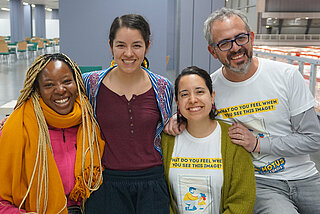
Lara Koller also developed “Somewhere under the Rainbow” with her partner Kiwook Nam. Insects have to collect coloured chippings and exchange them for the colours of the rainbow. The goal is, of course, to be the first to have all six colours together. Lara also reported interest on the part of various games editors, who sometimes asked for a brief video presentation afterwards. A games designer can then hope that a prototype will be requested.
The international background of the games inventors was remarkable: they came from a good twenty countries. The concentrated cosmopolitan power was palpable. The immediate proximity of game inventors from Mexico, Nigeria and Chile in one presentation corner served as proof of this. Their games were evidence of their cultural roots.
Huge interest from editors.
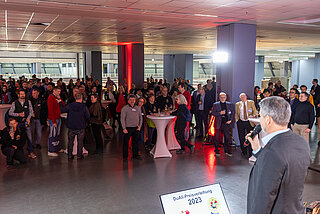
It wasn’t only the game designers who were satisfied with what was on offer at the first Game Inventors Convention. The editors also seized the chance to make personal contact with them – they are all there in Nuremberg after all. Instead of filling their trade fair calendars with individual appointments, such a format offers them a time-efficient way to explore the new ideas. So it’s no surprise that those responsible from all the large and many small publishing houses were present there. Wolfgang Lüdtke, editor at Kosmos, felt that the Game Inventors Convention was a must-attend event. He reported that the Kosmos team had split up so that each of the six employees could talk to some of the roughly 150 authors and examine their ideas. By doing things this way, the publishing house ensured that everything from the large range of products was actually seen. Lüdtke comes to this overall impression: “The Game Inventors Convention in Nuremberg was pretty good. Naturally, nobody knows yet what will become of individual games. But the event should definitely be repeated.” This confirms the impression of the games designers. A win-win situation.
After the fair closed, there was a get-together with Franconian beer and Nuremberg bratwursts at the GamingHour in close proximity to the inventors’ tables. Following the awarding of the DuAli game prize, there was plenty of time for small talk and networking. Nothing is more important when those involved in new game ideas come together to create a solid basis for good cooperation – an aim that was certainly achieved.
About the author:
Peter Neugebauer is still a "big kid" through and through. In early childhood, his parents introduced him to board games. And games were obligatory and always welcome at Christmas and on his birthday. Peter Neugebauer didn’t stop playing, not even during his years of study or working life. Early on, he reviewed new products, initially in trade journals, then also in daily newspapers and, for almost 40 years, in industry magazines. He can’t live without playing.


